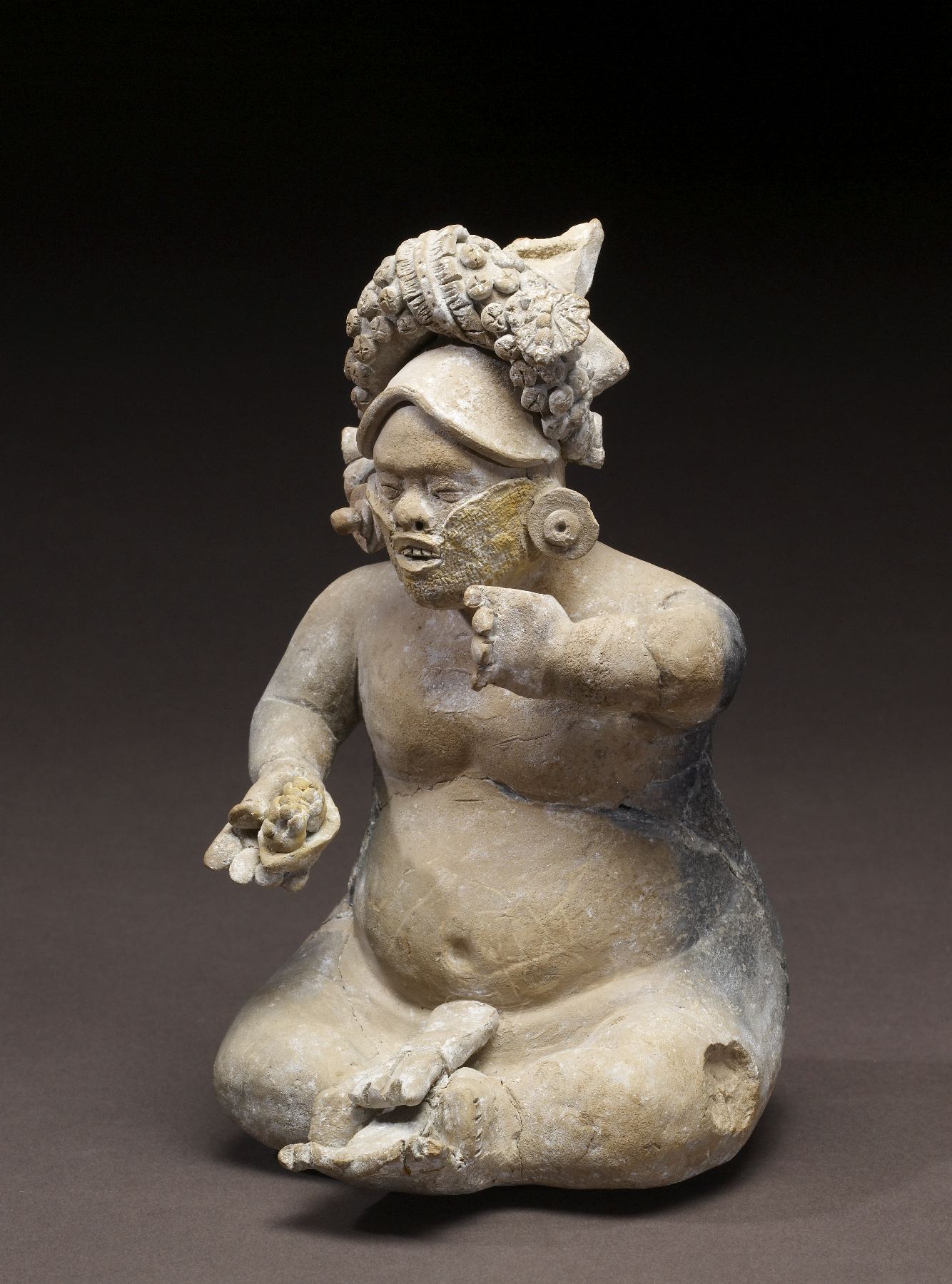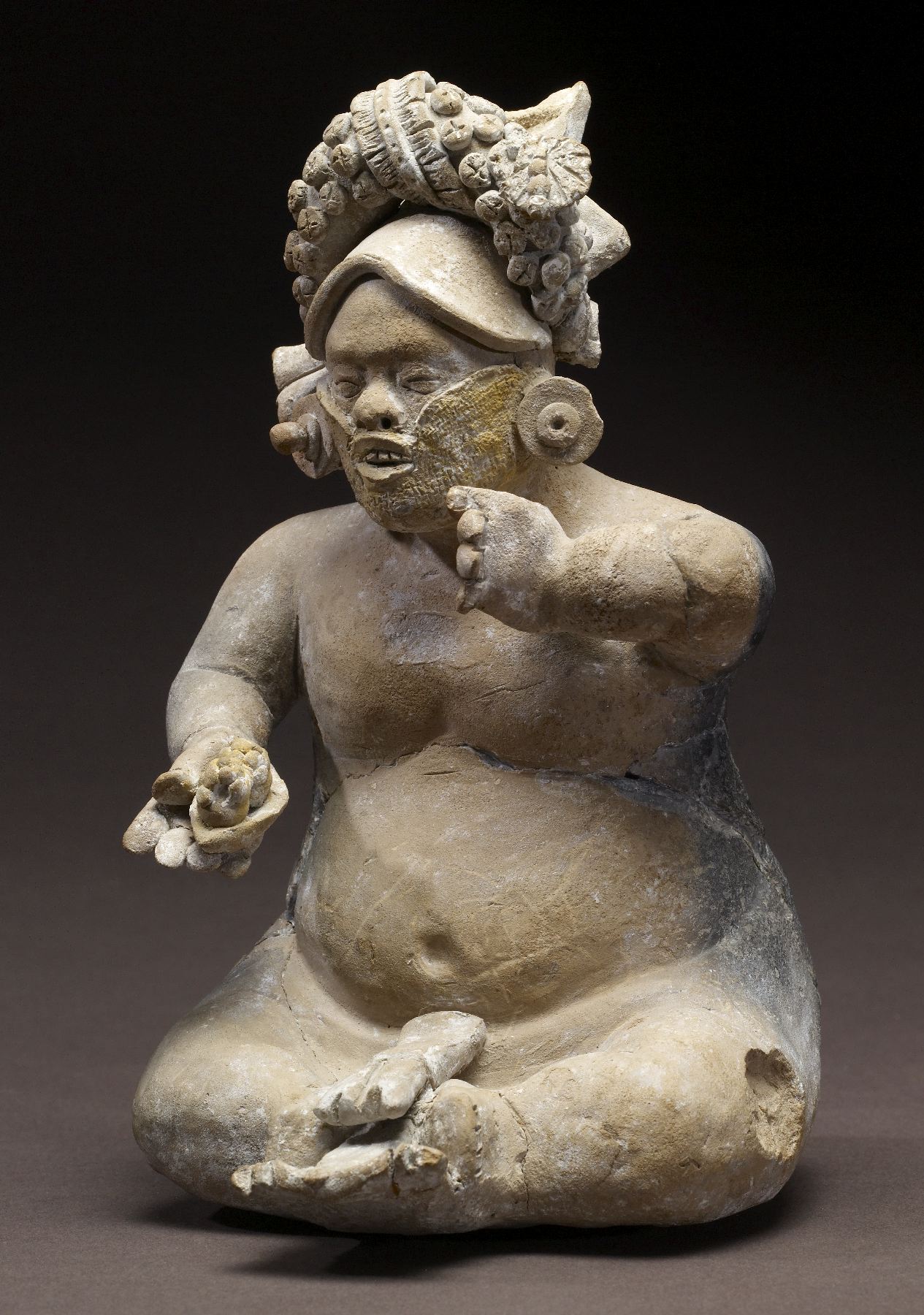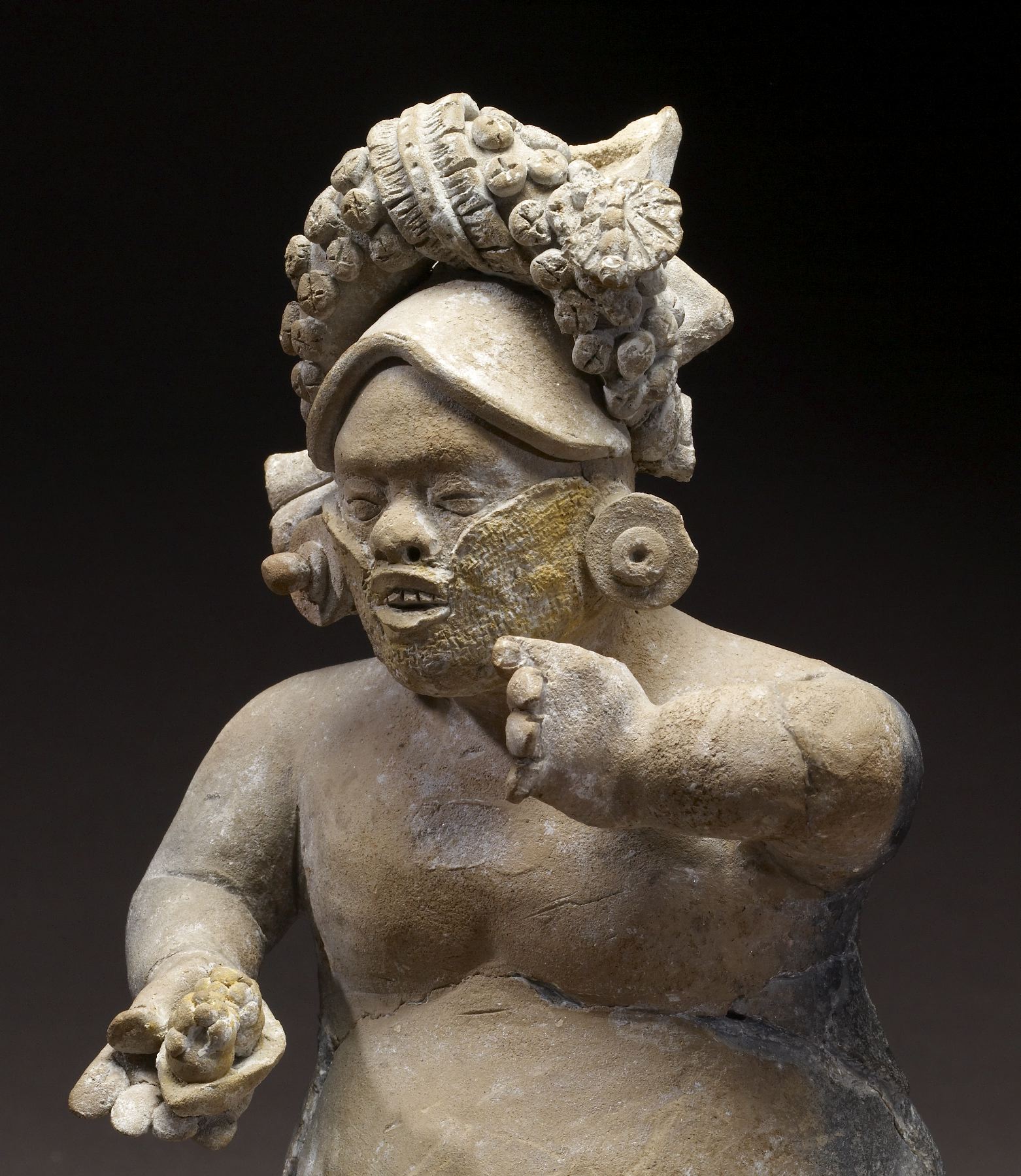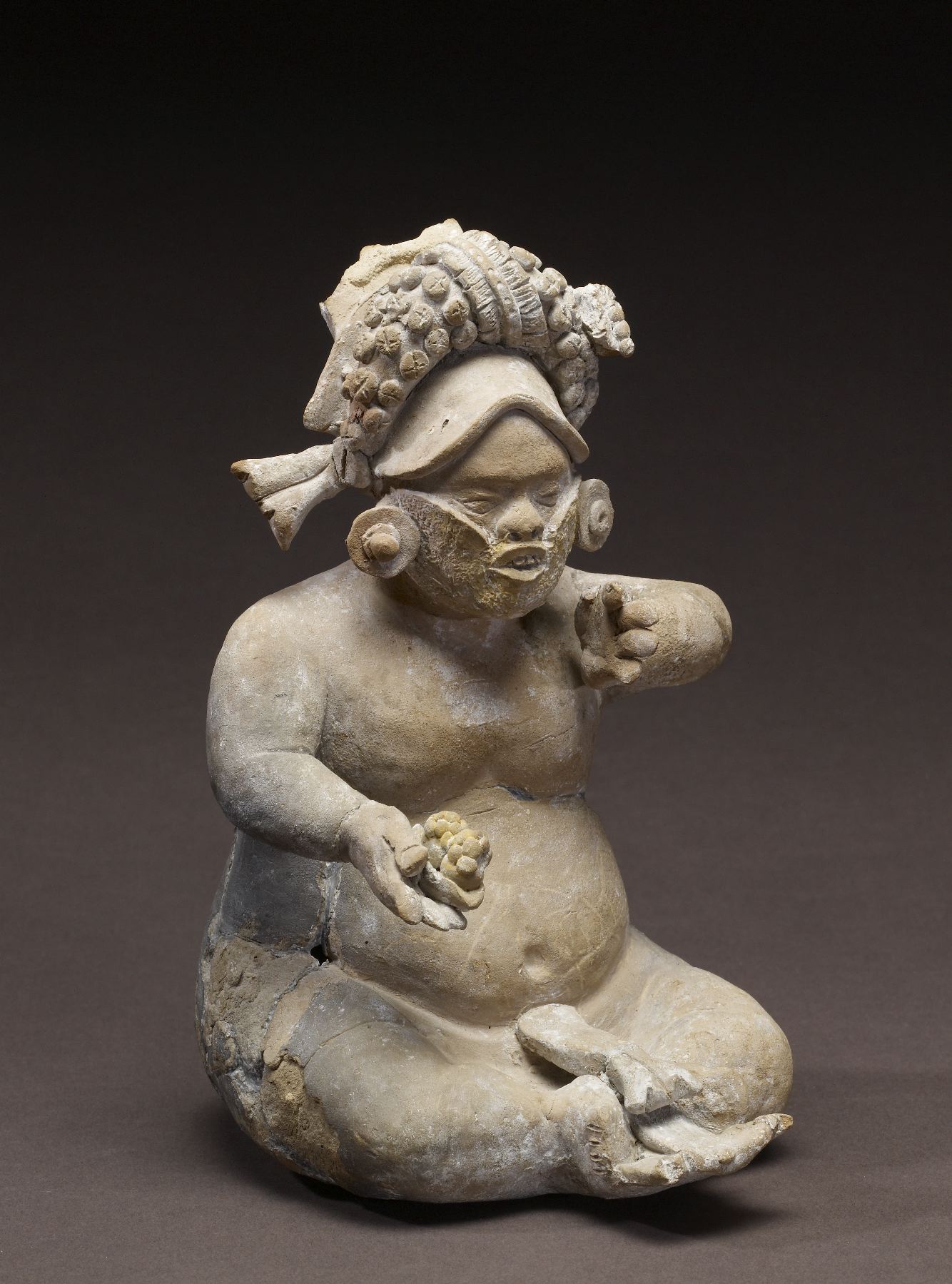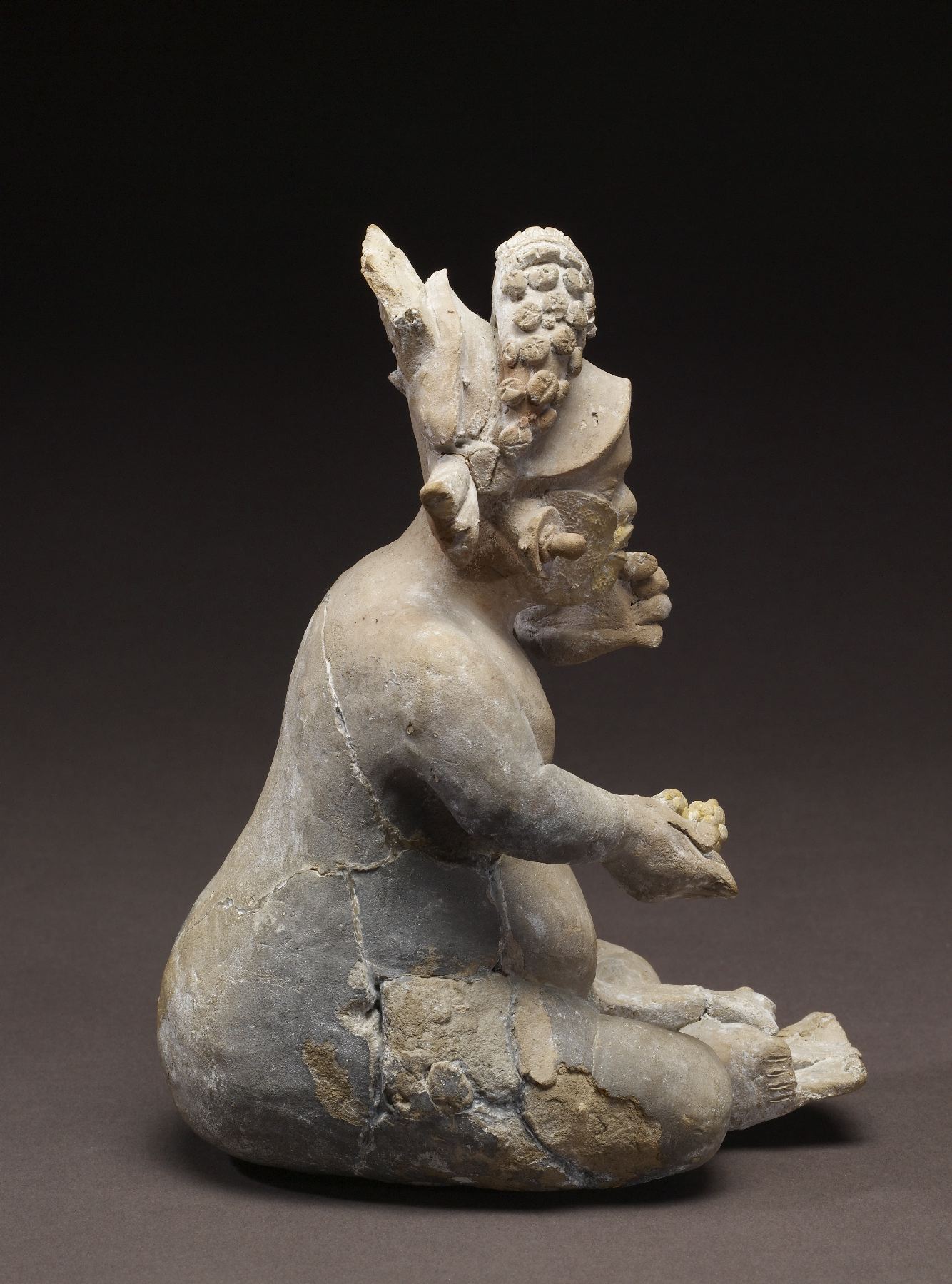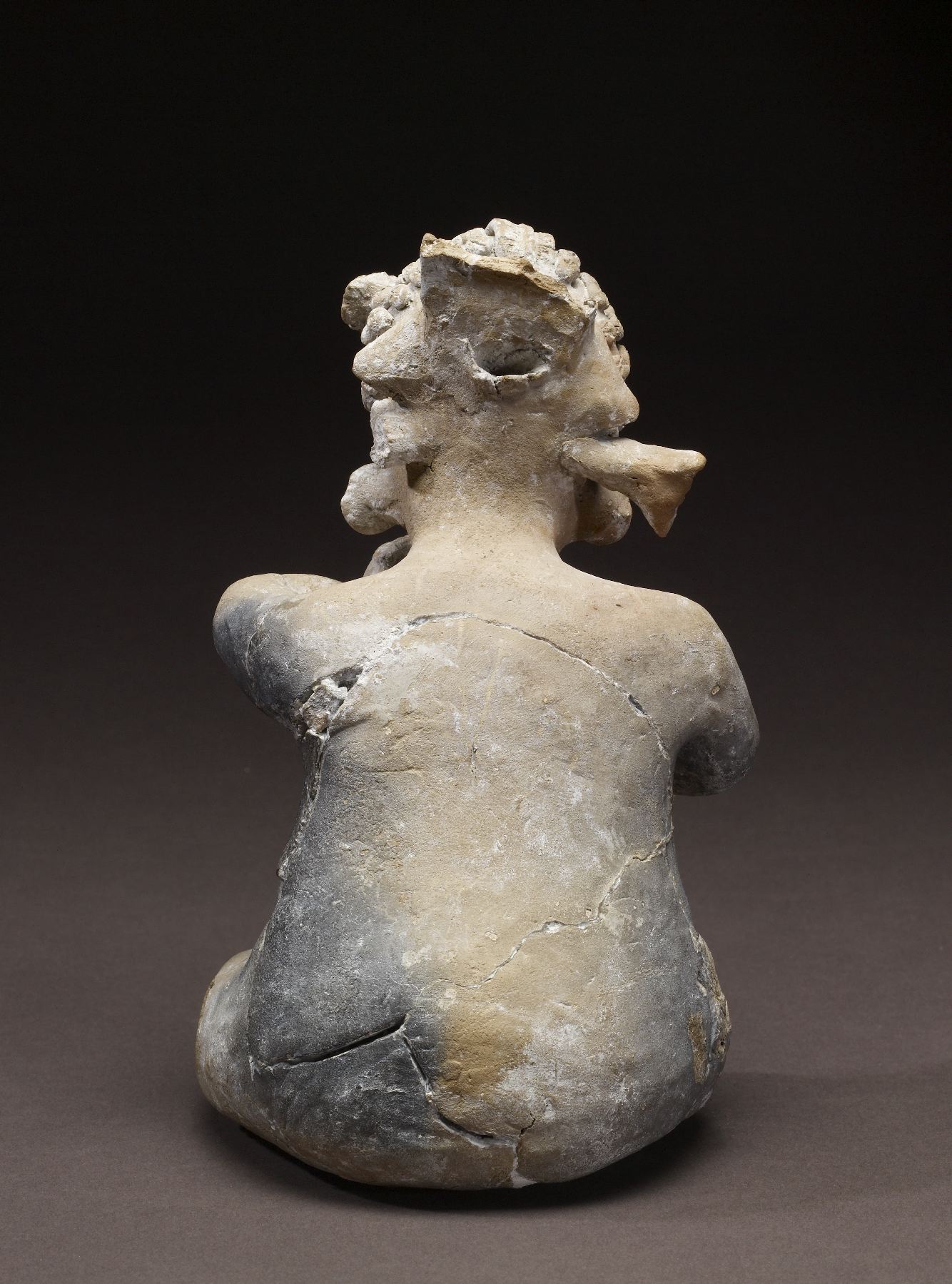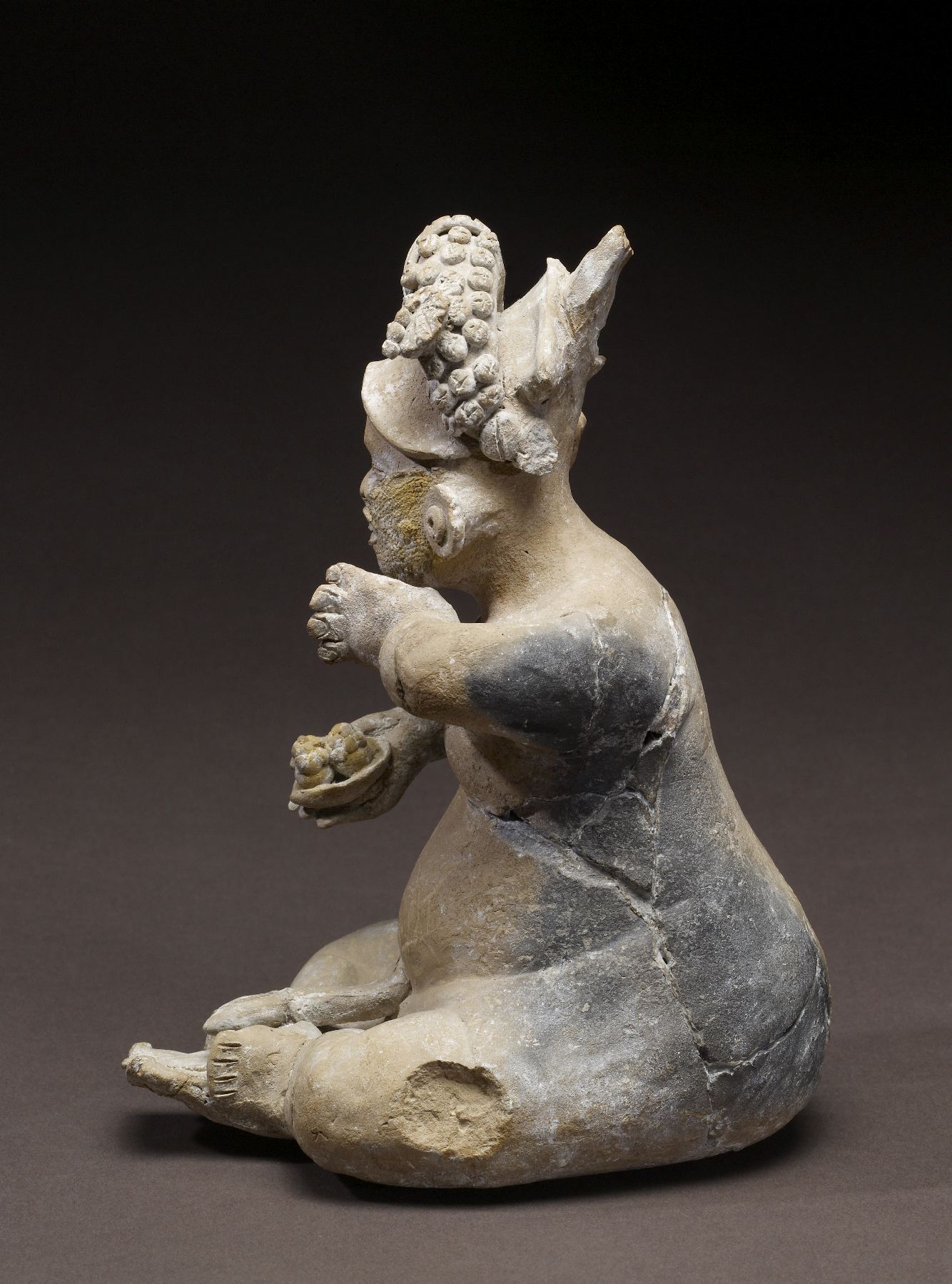Figure of a Scribe (Man with dwarfism)
(Ancient Americas )
The ornate turban worn by this man is typical of the courtly garb of key individuals serving the ruler in the royal courts of the Classic Maya (ca. 400-800 CE). This figure wears the so-called spangled turban headdress, especially common for scribes, as well as for gods and humans associated with Creation. Scribes held a high position at the Maya courts, for learning to read and write Maya hieroglyphs was a difficult process. A curious feature of this particular figure is that he holds what may be a halved cacao pod in his right hand. His cheeks are covered with what appears to be a thin, woven fabric; this recalls other figurines, many of which are people with dwarfism, with an unidentifiable material plastered to the lower half of their face. These features suggest the depiction of a formal rite. The graceful rendering of this figure and the exceptional attention to detail reveal the work of a master artist.
People with dwarfism were important members of royal Maya courts. They are portrayed serving food, playing musical instruments, holding sacred objects for the ruler, and as diviners and scribes. Their elevated social roles were steeped in cosmology and religious mythology, especially that of the maize god, who was assisted by a dwarflike figure when the deity set the Three Stones of the cosmic hearth at the beginning of Creation. Members of Classic Maya communities probably viewed people with dwarfism as the living embodiment of the maize god's supernatural helpers, who continued their sacred duty in the regal court. Maya peoples today believe that earlier creations were populated by a race of people of small stature, called aluxes in some Mayan languages, who now reside inside the earth, living below the ruins of the ancient cities.
Provenance
Provenance (from the French provenir, 'to come from/forth') is the chronology of the ownership, custody, or location of a historical object. Learn more about provenance at the Walters.
J. Guy Puerto [date and mode of acquisition unknown]; John G. Bourne, 1960s, by purchase; Walters Art Museum, 2009, by gift.
Exhibitions
| 2012-2013 | Exploring Art of the Ancient Americas: The John Bourne Collection Gift. The Walters Art Museum, Baltimore; Frist Center for the Visual Arts, Nashville. |
| 1998-2008 | Art of Ancient America, 1500 B.C.-1400 A.D.. Museum of New Mexico, Santa Fe. |
Conservation
| Date | Description | Narrative |
|---|---|---|
| 1/1/2011 | Treatment | Low-fired ceramics like this Dwarf Figurine are fragile. It was broken and, in the past, was reassembled from multiple fragments, using a large amount of glue, which caused further damage to the object. Conservation treatment at the Walters began with removing the old glue and reassembling the sculpture using a more appropriate adhesive that is easily removable should additional conservation be required in the future. The cracks were filled in, and a flaking area on the figure’s right hip was repaired by covering the surface with a thin piece of special paper, which acts like a bandage. |
Geographies
Mexico, Campeche (Place of Origin)
Measurements
H: 8 x W: 5 x D: 6 1/4 in. (20.32 x 12.7 x 15.88 cm)
Credit Line
Gift of John Bourne, 2009
Location in Museum
Not on view
Accession Number
In libraries, galleries, museums, and archives, an accession number is a unique identifier assigned to each object in the collection.
In libraries, galleries, museums, and archives, an accession number is a unique identifier assigned to each object in the collection.
2009.20.36

